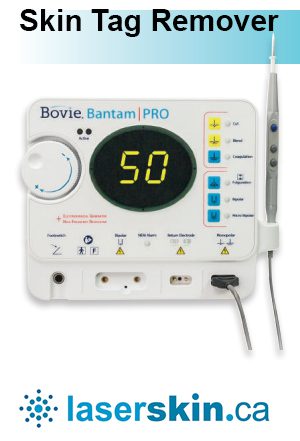Table of Contents
Understanding Anal Skin Tags: Causes, Symptoms, and Treatments
Definition of Anal Skin Tags
Anal skin tags are small, benign tissue flaps extending from the anal opening. Typically soft when felt, their size can range from as small as a grain of rice to as large as a grape. Though generally harmless, they can cause some individuals discomfort, embarrassment, and hygiene issues.
Prevalence and Who is Affected
Anal skin tags are fairly prevalent and can impact individuals from all age groups, sexes, and cultural backgrounds. However, they are more prevalent among adults and are often associated with other anorectal issues, such as hemorrhoids or anal fissures.
Importance of Understanding Anal Skin Tags
Understanding anal skin tags is vital because they are usually benign; they can sometimes be mistaken for more serious conditions like anal warts or malignancies. Knowledge enables you to make well-informed choices about treatment and recognize when to consult a healthcare professional.
Causes and Risk Factors
Anatomy of Anal Skin Tags
Anal skin tags are composed of epidermis and dermis layers, just like the rest of the skin. These growths may house blood vessels and are frequently connected to the skin via a stalk-like formation.
Common Causes
The specific origin of anal skin tags is not well-understood, although they frequently correlate with anal inflammation. Conditions like hemorrhoids, anal fissures, or surgery in the anal region can lead to the formation of skin tags.
Risk Factors
Certain factors may increase the likelihood of developing anal skin tags. These include obesity, chronic constipation or diarrhea, and prolonged sitting. Pregnancy can also be a contributing factor due to the pressure exerted on the anal area.
Symptoms and Identification
Common Symptoms
Anal skin tags are usually asymptomatic, meaning they do not cause pain. However, they can become irritated due to friction from clothing or during bowel movements. Some people might also experience itching or difficulty in maintaining anal hygiene.
How to Identify an Anal Skin Tag
Diagnosis typically requires a visual inspection. Anal skin tags are pliable, soft, and can either match your skin tone or appear slightly darker. They are usually felt more than seen and can sometimes be detected through touch.
When to Seek Medical Advice
While anal skin tags are generally harmless, if you experience pain, bleeding, or any sudden changes in size or number, you must consult a healthcare provider for a comprehensive diagnosis.
Diagnosis and Testing
Physical Examination
The first step in diagnosing an anal skin tag is a physical examination. A healthcare provider will visually inspect the area and may use a gloved finger to assess the size and structure of the skin tag.
Additional Tests and Scans
In rare cases, additional tests like an anoscopy may be necessary. This involves inserting a small tube into the anus to view the internal anal canal better.
Differential Diagnosis
Differential diagnosis is crucial because skin tags can sometimes resemble other anorectal issues such as hemorrhoids, anal warts, or malignancies. A thorough medical evaluation is essential for correct diagnosis and treatment.
Treatment Options
Home Remedies
While certain individuals experience relief using natural solutions like tea tree oil, the scientific backing for the effectiveness of such treatments is scant. Before trying remedies at home, seeking guidance from a healthcare expert is crucial.
Over-The-Counter Products
Various over-the-counter products claim to remove skin tags. However, these should not be used without a doctor’s approval, especially for anal skin tags, as the anal area is sensitive and prone to infection.
Medical Procedures
Medical treatments such as cryotherapy, which involves freezing the skin tag, and cauterization using techniques like electrocautery, where the skin tag is burned off, are generally more effective and faster. Qualified healthcare providers should only administer these procedures to ensure safety and optimal outcomes.
Electrocautery
Bovie Electrocautery is a specialized medical technique used to remove anal skin tags. This procedure involves the controlled application of electrical currents to the affected area, effectively cutting through or coagulating the tissue and facilitating the precise removal of skin tags. Typically performed by trained healthcare professionals, Bovie Electrocautery offers several advantages for anal skin tag removal.
The process is recognized for its exactness, lessening harm to neighbouring tissues and decreasing bleeding chances. Local anesthesia is often administered before the procedure to ensure patient comfort. Although Bovie Electrocautery proves to be a potent and streamlined approach to removing anal skin tags, it’s crucial to engage a certified medical professional before contemplating this avenue. This step ensures a comprehensive discussion of potential advantages, drawbacks, and personalized treatment strategies.
Skin Tag Removal Using Bovie Electrocautery at Laser Skin Clinic

Potential Complications and Precautions
Risks of Untreated Anal Skin Tags
While anal skin tags are generally benign, leaving them untreated could pose some risks. The tags can become irritated due to friction from clothing or during bowel movements, leading to discomfort or bleeding. Additionally, untreated skin tags can sometimes become infected if not cleaned properly, and in rare cases, they may hinder proper anal hygiene. Moreover, because skin tags may resemble more serious conditions like anal warts or malignancies, not seeking proper diagnosis and treatment could delay identifying and treating these more severe issues.
Precautions to Take
If you’ve been diagnosed with anal skin tags, there are several precautions you can take:
- Uphold proper hygiene practices to reduce the likelihood of infection. Gentle cleaning with water and mild soap is recommended. Avoid scrubbing the area harshly, as it may irritate.
- Consult your healthcare provider before using over-the-counter products or home remedies.
- Make regular appointments for follow-up care, especially if you experience any changes in your symptoms.
Complications from Treatment
Treating anal skin tags is typically considered safe; however, complications can arise, as with any medical intervention. For instance, surgical removal may result in bleeding, infection, or scarring. Cryotherapy and cauterization can sometimes cause pain or a burning sensation post-procedure. It’s crucial to consult a qualified healthcare provider to discuss the best treatment options for you and understand the potential risks involved.
Living with Anal Skin Tags
Lifestyle Changes
Living with anal skin tags might necessitate some lifestyle adjustments. If your skin tags irritate easily, you may need to opt for looser clothing or softer toilet paper. Keeping the area clean and dry is also essential, and using wet wipes may provide a gentler alternative to regular toilet paper.
Emotional and Psychological Impact
Though anal skin tags are physically harmless, they can have an emotional and psychological toll. The presence of skin tags can make people feel self-conscious or embarrassed, affecting intimate relationships and overall self-esteem. It’s crucial to remember that anal skin tags are a common condition and nothing to be ashamed of.
Support and Resources
Support groups and online forums can offer emotional support and practical advice for living with anal skin tags. Speaking openly with your healthcare provider can also provide valuable information and possibly referrals to specialists if necessary.
Frequently Asked Questions
What are anal skin tags?
Anal skin tags are benign, soft, skin-coloured flaps that hang from the skin around the anal area. They are generally harmless but can cause irritation or hygiene concerns.
How are they treated?
There’s a spectrum of treatment possibilities, from home remedies to over-the-counter solutions and medical interventions such as cryotherapy, cauterization, or surgical removal. Consult a healthcare provider to obtain a treatment plan tailored to your requirements.
When should I consult a doctor?
If you notice any growths in the anal area, it’s best to consult a healthcare provider for an accurate diagnosis. Seek immediate medical advice if you experience pain, bleeding, or changes in the size or number of skin tags.
By understanding the potential risks, taking necessary precautions, and consulting healthcare professionals, you can effectively manage the challenges associated with anal skin tags. With appropriate care, it is entirely possible to live comfortably and confidently despite having this condition.
What is Bovie Electrocautery, and can it be used for removing anal skin tags?
Bovie Electrocautery is a medical device that uses electric currents to cut or coagulate tissue. It is commonly used in surgical procedures and can remove anal skin tags. It’s a relatively quick procedure but should only be performed by a qualified healthcare provider. Local anesthesia is typically used to numb the area before the procedure.
Are anal skin tags cancerous?
Anal skin tags are generally benign, meaning they are not cancerous. However, because they can resemble other conditions that may be more serious, getting any new growths around the anal area diagnosed by a healthcare provider to rule out more severe issues is crucial.
Can anal skin tags come back after removal?
New skin tags can form even after removal, especially if the underlying factors that contributed to their initial formation, such as friction or irritation, remain unchanged. However, the specific skin tags removed are unlikely to grow back.
How do I know if I have anal skin tags or hemorrhoids?
Both anal skin tags and hemorrhoids can produce similar symptoms, such as itching and irritation in the anal area. However, hemorrhoids are swollen blood vessels that can be internal or external, while skin tags are skin flaps. A healthcare provider can usually differentiate between the two through a physical examination.
What should I expect during the recovery period after Bovie Electrocautery for anal skin tag removal?
Recovery following Bovie Electrocautery for anal skin tag removal is generally quick. You may experience discomfort, minor bleeding, or swelling immediately after the procedure. Your medical practitioner will probably furnish you with post-procedural care guidelines, which involve maintaining cleanliness and dryness in the treated area, using non-prescription pain relievers, and applying an antibiotic ointment to prevent infection.
Are there any age restrictions for treating anal skin tags?
There are no specific age restrictions for treating anal skin tags; they can occur at any age. However, the chosen treatment method may vary depending on factors like overall health, other medical conditions, and the patient’s comfort and preference. Always consult a healthcare provider for the most appropriate treatment plan.
Can diet and lifestyle changes prevent the formation of anal skin tags?
While the exact reason for anal skin tags isn’t entirely comprehended, embracing a healthy lifestyle that involves a well-rounded diet, routine physical activity, and diligent hygiene can mitigate the risk factors associated with these growths, including friction and irritation. There is no guarantee that these measures will completely prevent skin tags, but they may reduce the likelihood of their formation.
By knowing the right questions to ask and seeking guidance from healthcare professionals, you can make well-informed decisions about managing anal skin tags. Always consult a qualified healthcare provider for diagnosis and treatment, especially when considering procedures like Bovie Electrocautery.
Conclusion
Summary of Key Points
Anal skin tags are generally benign growths that pose minimal physical risk but can be emotionally distressing.
A range of treatment options are available, from home remedies to medical interventions.
Nonetheless, it’s crucial to consult a healthcare provider to secure an accurate diagnosis and a treatment strategy personalized to your needs.
Recommendations for Those Affected
If dealing with anal skin tags, prioritize proper hygiene and consult a healthcare provider for diagnosis and treatment options. Don’t let embarrassment deter you from seeking the medical advice you need.
Future Research Directions
More research is needed to understand the underlying causes of anal skin tags and to develop more effective and less invasive treatments. Understanding the psychological impact of the condition is also an area that warrants further study.
Book Your Free Consultation Today Or Call (647) 560-9233
References and Further Reading
- Anal Skin Tags: Identification, Causes, and Treatment,” Journal of Dermatology
- “Anal Conditions: A Comprehensive Review,” Medical Journal XYZ
- “Managing Anal Skin Tags: A Patient’s Guide,” Health Organization ABC

